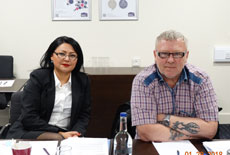More than half a million new pilots will be needed
The number of planes in the air is set to more than double over the next 20 years, according to a new forecast.
By 2038 there will be 48,000 passengers and freighter aircraft flying, predicts the latest Airbus Global Market Forecast, up from almost 23,000 today. The increase will require more than 39,000 new aircraft to be built, and more than half a million new pilots. In two decades’ time, only 8,470 planes will remain from the current fleet flying today, with growth coming from fuel-efficient aircraft.
Air traffic is set to grow at 4.3 per cent a year, the Airbus Global Market forecasted. The French planemaker predicts that large cities (”Aviation Mega Cities”), particularly in emerging markets, will drive aviation growth over the next 20 years. “The 4 per cent annual growth reflects the resilient nature of aviation, weathering short term economic shocks and geopolitical disturbances. Economies thrive on air transportation. People and goods want to connect,” said Christian Scherer, Airbus chief commercial officer and head of Airbus International.
“Globally, commercial aviation stimulates GDP growth and supports 65 million livelihoods, demonstrating the immense benefits our business brings to all societies and global trade.”
Earlier this week, Boeing predicted that China, soon to be the world’s largest aviation market, will need more than 8,000 planes to keep pace with demand.
The number of people flying continues to increase every year. In 2018, more than 4.4 billion people flew, an increase of 6.9 per cent year on year, according to figures from the International Air Transport Association (Iata). Trade body Iata found that more Britons travelled abroad last year than any other nationality. In 2018, 126.2 million passengers were British – totalling 8.6 per cent, roughly one in 12, of all international travellers.
For more aviation updates read some of our other articles











